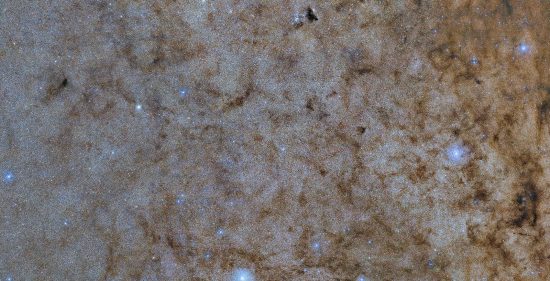
November 2, 2020
In other Pictures of the Day articles, it was noted that dark energy is primarily an ad-hoc theory, so that the current gravitational model of the Universe can be preserved.
The lack of matter that can be observed in the Universe presents problems for the underlying concept of “big bang cosmology”. According to conventional theories, it was the big bang that brought all matter and energy—including gravity—into existence. Every modern cosmological theory starts with that.
The majority of modern astrophysicists believe that, without adding dark matter to the equation, there is not enough gravity in the Universe to account for galaxies bunching together. Also, without sufficient mass, the galaxy clusters should have slowed down considerably over the last few billion years; not maintaining such wild recessional velocities, some of which approach 90% the speed of light. In fact, much to the perplexity of standard gravity-only views of the Universe, the more remote galaxies look like they are accelerating away from the Milky Way.
For many years, investigators also tried to reconcile the amount of mass in the Universe with how fast they believed the Universe is expanding. Their only recourse was to invent the existence of another undetectable force, “dark energy”.
However, years ago, Saul Perlmutter, Nobel laureate and leader of the Supernova Cosmology Project at Berkeley Laboratory wrote:
“The Universe is made mostly of dark matter and dark energy and we don’t know what either of them is.”
In other words, two of the most actively pursued problems in physics could be based in false data interpretation about how the Universe is made. There are no consensus theories: they do not agree with one another about dark matter and dark energy.
For example, if the Universe is based on the prevailing theories of Einstein, and gravity is the bending of time and space around any object with mass, then dark matter and dark energy are merely illusions. The misunderstanding of Einstein’s space/time curvature necessitated the creation of a new effect, because the application of the theory is incorrect. That idea was first suggested in 2006 by a team of Italian researchers who analyzed rotational curves from several galaxies and thought that dark matter and dark energy were not necessary with their new approach.
Recently, astronomers using the Dark Energy Camera say that they are mapping the distance to each star in the Milky Way, in order to create a 3D diagram of its galactic bulge. Since the camera is highly sensitive to infrared light, they are attempting to see through the dust lanes that obscure the center of the galaxy, thereby gaining a better understanding of its evolution.
From the perspective of the Electric Universe theory, electric currents drive the galaxies and their associated stars. Laboratory experiments demonstrate that twin Birkeland current filaments can create structures that resemble spiral galaxies. Birkeland currents have a longer-range attractive force than gravity—diminishing with the reciprocal of the distance from the current axis—which could account for the anomalous movement of stars as they revolve around the galactic core.
It is the movement of electricity through plasma that tends to initiate the effects that can be observed with space-based telescopes. It is electric currents in the cosmos and their associated magnetic fields that should be the focus of research and not a search for the undetectable.
Stephen Smith
The Thunderbolts Picture of the Day is generously supported by the Mainwaring Archive Foundation.












